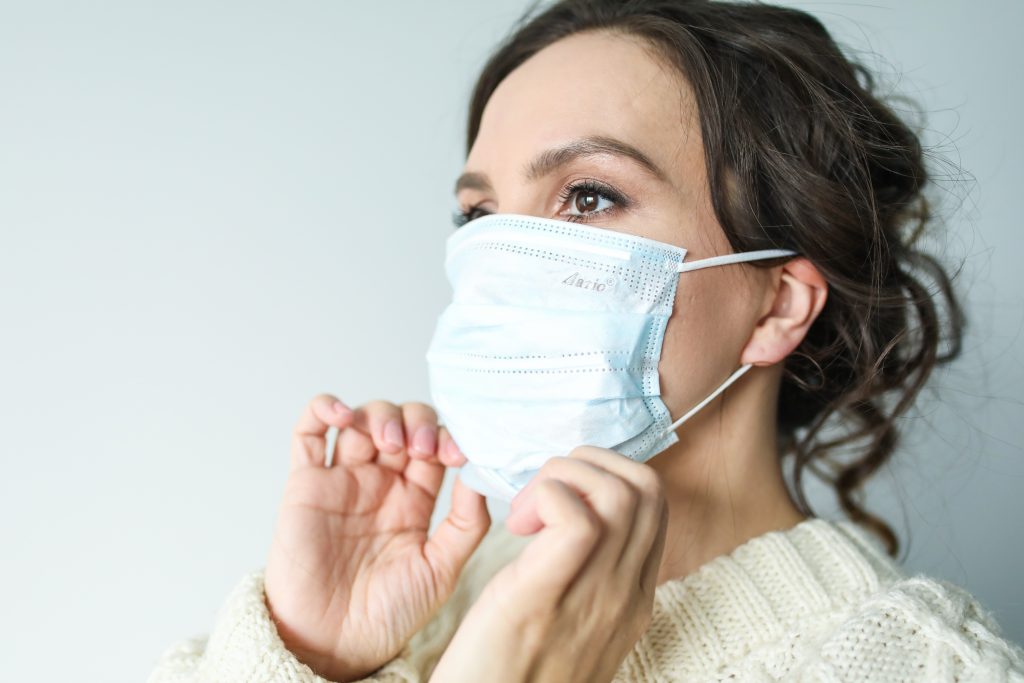Written By: Joseph A. Cescon and Aidan Vining, Summer Student
As more businesses and public spaces open and people expand their social contact, many Ontario cities are making masks or face coverings mandatory in public spaces to reduce the risk of transmission of COVID-19.
As of July 7, 2020, there is a bylaw in Toronto that provides guidelines for businesses as well as the public. The guidelines for the public are as follows:
- You must wear a mask or face covering when you are in indoor public spaces.
- The mask or face covering should cover your nose, mouth, and chin, without gaping.
- Follow the mask policy of the business you are visiting.
- Exemptions are allowed. You do not need to bring proof of your exemption.
- Be respectful as businesses adopt new policies to protect all of us from COVID-19.
Most areas of the GTA have instituted similar rules, along with other Ontario cities like Kitchener-Waterloo, Sault Ste. Marie, Ottawa, and Kingston. While many Ontarians recognize the importance of these procedures and have been willingly wearing masks already, some people refuse to wear masks and view the mandatory policies impinging against their freedoms. For example, protestors rode the TTC without masks in defiance of Toronto’s new bylaw. One of the protestors involved gained media attention only a few days earlier when she refused to wear a mask in Toronto’s St. Joseph’s Hospital and was denied assistance because she would not wear a mask.
As we have seen, pockets of concentrated outbreaks can occur when protocols are not strictly followed, as in the case of 14 staff members of a Home Depot tested positive for the virus in an outbreak in Richmond Hill, Ontario. In Kingston, 16 cases were tied to just one nail salon. These cases offer an example of the importance of taking extra measures in public spaces and demonstrate how not following guidelines can lead to many people being infected.
These new policies and the refusal by what is currently a fringe minority of anti-maskers to abide by them, raise interesting questions of potential liability. What liability, if any, exists where a person refuses to wear a mask in a public space and people become infected with COVID-19 as a result?
Duty of Care
To be found liable in negligence, there needs to be a duty of care owed by the anti-masker to the person infected. The general test to determine whether there is a duty of care is to analyze whether there is a sufficient relationship of proximity between the anti-masker and the infected person such that it is reasonably foreseeable in the circumstances that carelessness on the part of the anti-masker could create a risk of injury or harm to the infected person.
Determining whether a duty of care exists is fact-specific and turns on a number of factors. However, due to the close proximity of many public spaces now re-opening and the limiting of the number of people in these areas, a strong argument could be made that people within indoor public spaces owe a duty of care not to cause harm to other people in indoor public spaces.
Breach of the Standard of Care
A breach of the standard of care also needs to be established. The standard of care that one must meet is that of a reasonable person in the circumstances. Elements of this analysis are considerations such as: what was the probability of harm, what is the severity of the harm, what was the cost of avoidance of the harm, and social utility. Overall, the question is how a reasonable person would have acted at the relevant time, in the particular circumstances.
Choosing not to wear a mask at a time when it is mandated through a bylaw for the purpose of preventing transmission of a potentially fatal virus would likely be found to be a breach of the standard of care. We know the risk of transmission is high when someone is COVID positive, and the severity of the harm can be devastating, fatal, and if not, long-lasting. News surrounding the COVID pandemic and the mandating of masks have been widespread. Further, the cost of wearing a mask or face covering is minimal, with many businesses and NGO’s distributing masks free of charge.
It should also be noted that most of the bylaws mandating face coverings have recognized exceptions for young children and those who are unable. This is a factor to consider in determining the standard of care applicable for certain individuals.
Causation
To be liable, it needs to be established that the careless non-mask-wearer actually caused harm to the infected person. Difficulties arise as it is impossible in most cases to know how a person contracted COVID. Depending on the circumstances, it may be possible to establish causation. This may be easier where the individuals were in close, prolonged contact, or where other individuals became infected as a result of contact with the anti-masker.
Damages
The infected person would also need to demonstrate that they suffered damages as a result of contracting the virus. Damages in these cases might include medical expenses, pain and suffering, loss of income, and/or wrongful death.
Conclusion
While the legal ramifications of the current pandemic have not been fully realized, it is likely that many of these issues will be litigated to some extent in the future. Choosing to not wear a mask when it is mandatory could potentially leave you liable. More importantly, not wearing a mask puts others and yourself at an increased risk of harm and transmission. It is crucial to follow health guidelines, procedures, and bylaws in order to ensure public safety.






